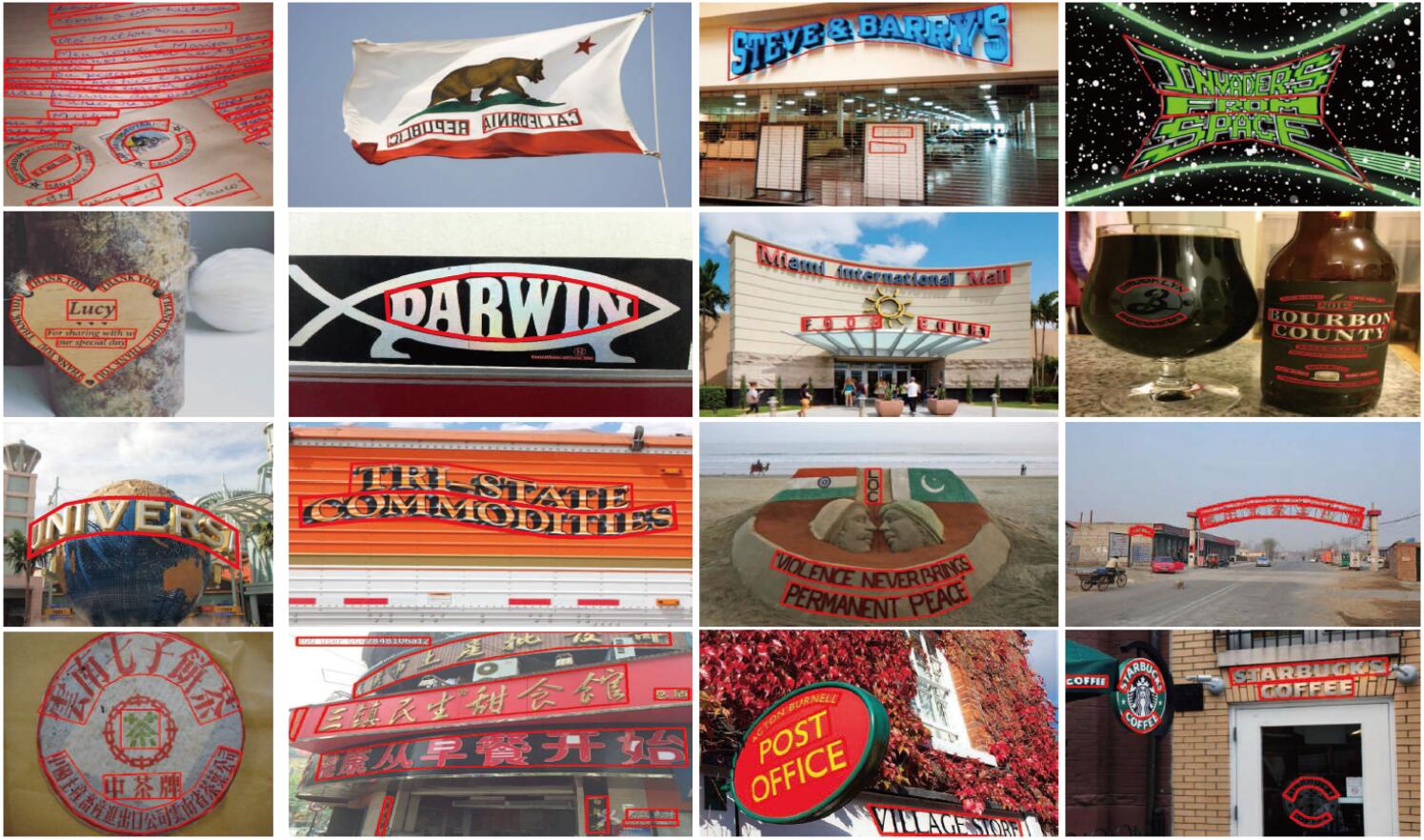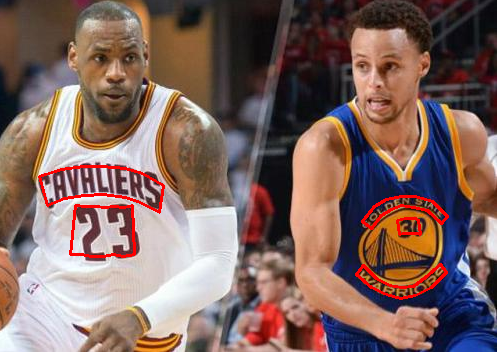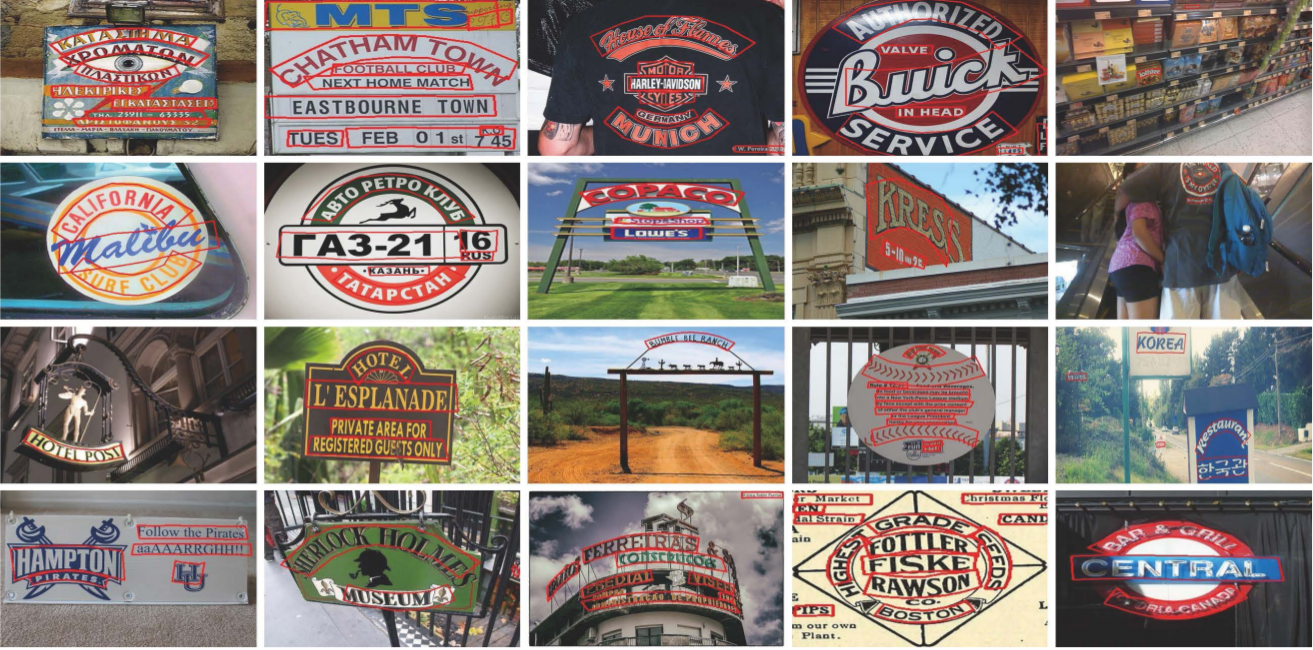Released on December 06, 2017
(July 25, 2018)
-
We provide a brief evaluation script for researches to evaluate their own methods on the CTW1500 dataset. The instruction and details are given in tools/ctw1500_evaluation/Readme.md.
-
The results from recent papers on the CTW1500 dataset are listed (Note that the table only listed the results from published papers. If your detection results on this dataset is missed, please let me know. )
| Method | Recall (%) | Precision (%) | Hmean (%) | Extra Data |
|---|---|---|---|---|
| Proposed CTD [paper] | 65.2 | 74.3 | 69.5 | - |
| Proposed CTD+TLOC [paper] | 69.8 | 74.3 | 73.4 | - |
| SLPR [paper] | 70.1 | 80.1 | 74.8 | - |
| TextSnake [paper] | 85.3 | 67.9 | 75.6 | PT(S(800K)) |
| PSENet-4s [paper] | 78.13 | 85.49 | 79.29 | PT(IC15(1K)+ MLT(9K)) |
| PSENet-2s [paper] | 79.3 | 81.95 | 80.6 | PT(IC15(1K)+ MLT(9K)) |
| PSENet-1s [paper] | 79.89 | 82.50 | 81.17 | PT(IC15(1K)+ MLT(9K)) |
*PT: pretrained data. S: synthesize data. PA: private data. PB (or name): public data.
Curved text are very common in our real-world. For examples, text in most kinds of columnar objects (bottles, stone piles, etc.), spherical objects, plicated plane (clothes, streamer, etc.), coins, logos, signboard and so on. Current datasets have very little curved text, and it is defective to label such text with quadrangle let alone rectangle. Curved bounding box has three remarkable advantages:
-
Avoid needless overlap
-
Less background noise
-
Avoid multiple text lines
Clone the Curve-Text-Detector repository
git clone https://github.com/Yuliang-Liu/Curve-Text-Detector.git --recursiveThe SCUT-CTW1500 dataset can be downloaded through the following link:
(https://pan.baidu.com/s/1eSvpq7o PASSWORD: fatf) (BaiduYun. Size = 842Mb)
or (https://1drv.ms/u/s!Aplwt7jiPGKilH4XzZPoKrO7Aulk) (OneDrive)
unzip the file in ROOT/data/
a) Train/ - 1000 images.
b) Test/ - 500 images.
c) Each image contains at least 1 curved text.
The visualization of the annotated images can be downloaded through the following link:
(https://pan.baidu.com/s/1eR641zG PASSWORD: 5xei) (BaiduYun. Size = 696 Mb).
We use resnet-50 model as our pre-trained model, which can be download through the following link:
(https://pan.baidu.com/s/1eSJBL5K PASSWORD: mcic) (Baidu Yun. Size = 102Mb)
or (https://1drv.ms/u/s!Aplwt7jiPGKilHwMsW2N_bfnb0Bx) (OneDrive)
put model in ROOT/data/imagenet_models/
Our model trained with SCUT-CTW1500 training set can be download through the following link:
(https://pan.baidu.com/s/1gfs5vH5 PASSWORD: 1700) (BaiduYun. Size = 114Mb)
or (https://1drv.ms/u/s!Aplwt7jiPGKilH0rLDFrRof8qmRD) (OneDrive)
put model in ROOT/output/
-
test.sh Downloading the dataset and our ctd_tloc.caffemodel, and running this file to evaluate our method on the SCUT-CTW1500 test set. Uncommend --vis to visualize the detecting results.
-
my_train.sh This file shows how to train on the SCUT-CTW1500 dataset. Downloading the dataset and resnet-50 pre-trained model, and running my_train.sh to start training.
Both train and test require less than 4 GB video memory.
- demo.py (cd tools/) then (python demo.py). This file easily shows how to test other images. With provided model, it can produce like
Train and test files are put under (model/ctd/smooth_effect/), and both the training and testing procedures are the same as above.
To visulize the ctd+tloc, simply uncomment ctd in the last of the test.prototxt, vice versa. Below are the first three images in our test set:
 |
 |
 |
If you are insterested in it, you can train your own model to test. Because training doesn't require so much time, we don't upload our own model (Of course, you can email me for it).
Visualization of LSI. By LSI, our CTD can be easily trained with rectangular or quadrilater bounding boxes without extra manual efforts. Based on our recent research, the stronger supervision can also effectively improve the performance.
For the labeling tool and specific details of the gound truths, please refer to data/README.md.
If you find our method or the dataset useful for your research, please cite
@article{yuliang2017detecting,
title={Detecting Curve Text in the Wild: New Dataset and New Solution},
author={Yuliang, Liu and Lianwen, Jin and Shuaitao, Zhang and Sheng, Zhang},
journal={arXiv preprint arXiv:1712.02170},
year={2017}
}
- Clone this repository. ROOT is the directory where you clone.
- cd ROOT/caffe/ and use your own Makefile.config to compile (make all && make pycaffe). If you are using ubuntu 14.04, you may need to modify Makefile line 181 (hdf5_serial_hl hdf5_serial) to (hdf5 hdf5_hl).
- cd ROOT/lib make (based on python2)
- pip install shapely. (Enable computing polygon intersection.)
Suggestions and opinions of this dataset (both positive and negative) are greatly welcome. Please contact the authors by sending email to
liu.yuliang@mail.scut.edu.cn.
The SCUT-CTW1500 database is free to the academic community for research purpose usage only.
For commercial purpose usage, please contact Dr. Lianwen Jin: eelwjin@scut.edu.cn
Copyright 2017, Deep Learning and Vision Computing Lab, South China China University of Technology. http://www.dlvc-lab.net






